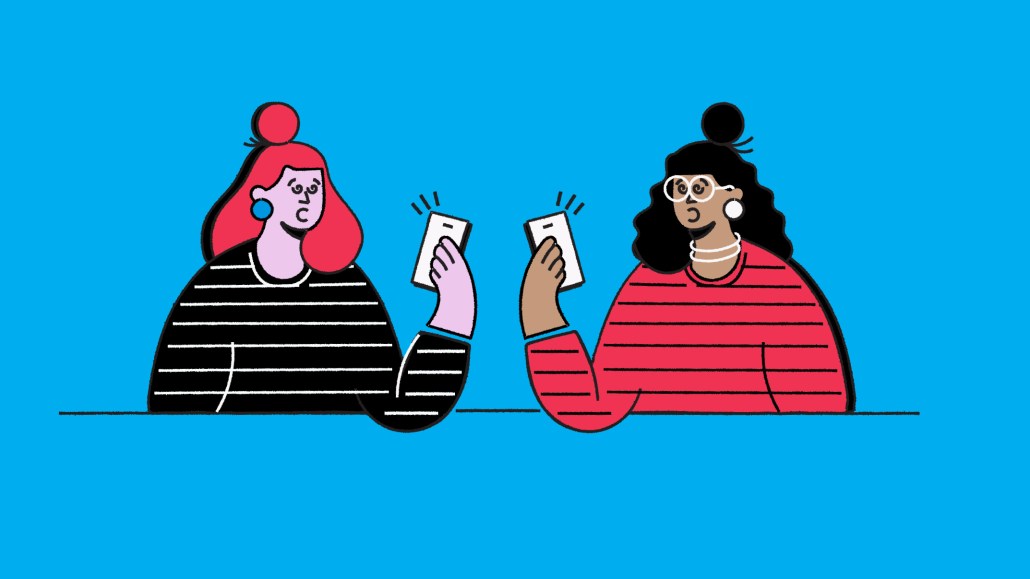Digiday+ Research deep dive: Instagram makes some meaningful gains with publishers

This research is based on unique data collected from our proprietary audience of publisher, agency, brand and tech insiders. It’s available to Digiday+ members. More from the series →
Not every single social media platform out there makes sense for every industry. This goes especially for publishers. Last week, we took a deep dive into how publishers are using Facebook this year. Today, we look at Meta’s other major social media platform: Instagram.
Digiday+ Research surveyed 72 publisher professionals in June to learn where Instagram fits into the social media strategy for their titles.
As should be no surprise to anyone in the publishing industry, posting on Instagram is not quite as ubiquitous as its Meta-owned sibling platform among media titles (Digiday’s survey found that 99% of publishers had posted to Facebook in the past month). But publishers’ use of Instagram is still significant, and it has bumped upward slightly since last year: 86% of this year’s survey respondents said they had posted on Instagram in the past month, up from 84% last year.
In terms of posting frequency, publishers don’t seem to have adjusted their strategies much since last year. In fact, the number of survey respondents who told Digiday their titles post on Instagram every day stayed exactly the same between last year and this year at 64%. Publisher execs who said they post at least once a week ticked down very slightly this year (from 34% in 2021 to 31% in 2022), and those who post at least once a month was up a bit from 2% last year to 6% this year.
The way publishers are investing in Instagram content has seen a change from last year, although the trend here is a bit complicated. When it comes to how much publishers are investing in creating original content for Instagram, the majority of respondents to Digiday’s survey landed in the middle, investing a little or a moderate amount, just as they did last year. However, this year, that middle is smaller, and those on the edges who said they invest a lot or not at all represent a growing number.
This year, a combined 58% of publisher pros said they’re investing a little or a moderate amount on original Instagram content, down significantly from 72% last year. Meanwhile, 15% said they’re not investing at all in original content on Instagram this year, up from 9% last year, and 26% said they’re investing a lot, up from 19%.
Far fewer publishers are investing in advertising on Instagram than on Facebook (where we learned last week three-quarters of publishers are buying ads): Digiday’s survey found that nearly half of publishers (46%) said they bought Instagram ads in the past month. However, when comparing this number to how much publishers are spending on ads with other social media platforms (which we will explore more in future deep dives), 46% is still a lot. This is potentially due to the fact that it’s an easy extension for publishers buying ads on one Meta-owned platform (Facebook) to add on and buy them on Instagram, as well.
Regardless of how publishers are investing in Instagram content, the social platform’s value has grown significantly in the eyes of publishing pros, Digiday’s survey found. When comparing the different social media platforms, Facebook was No. 1 for driving publishers’ revenues last year. But Instagram has turned the tables.
While the number of survey respondents who said Facebook is valuable or extremely valuable to driving their titles’ revenues fell significantly from 49% last year to 38% this year, the number of those who said Instagram is valuable or extremely valuable grew just as significantly from 27% last year to 39% this year – putting Instagram at No. 1.
And Instagram has not only maintained the top spot among publishers when it comes to brand-building this year – it has made meaningful gains. This year, more than three-quarters of survey respondents (76%) said Instagram is valuable or extremely valuable to building their titles’ brands, compared with 64% last year. It’s clear that publishers are really starting to see how Instagram fits into their business strategies.
Publishers’ utilization of Instagram also shows in how brand-appropriate they see Instagram for their titles. Just as with Facebook, zero respondents to Digiday’s survey said Instagram is not appropriate at all for their brands. And those who said Instagram is brand appropriate held steady: 70% of publisher pros said the platform is extremely appropriate or appropriate for their brands this year, compared with 71% last year. One interesting jump to note: Those who said Instagram is not very brand-appropriate jumped to 8% this year from 1% last year.
More in Media

A timeline of the major deals between publishers and AI tech companies in 2025
Here’s a list of all the major deals signed between publishers and AI tech companies in 2025.

No playbook, just pressure: Publishers eye the rise of agentic browsers
For the bulk of publishers, Google is, as ever, the one to watch. It’s already got agentic features within its Chrome browser, but that’s the tip of the iceberg, some say.

The biggest SEO lessons in 2025 for publishers
KPIs are changing, more AI search data is becoming available, and publishers are looking beyond search to grow their audiences and revenue.





